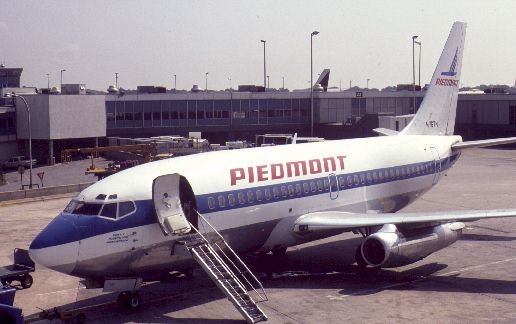
 |
|
|
|
|
||||
|
History Of Piedmont Airlines |
||||
 |
The origins of Piedmont Airlines can be traced back to 1931, when founder Richard A. Henson, an aviation pioneer and Fairchild Aircraft test pilot, began a fixed-base operation as Henson Aviation in Hagerstown, Maryland. More than thirty years later, in 1962, Henson Aviation instituted scheduled passenger service as the Hagerstown Commuter between Hagerstown and Washington National. Since that time, the Company has focused its efforts on scheduled service, and has grown into one of the nation’s preeminent regional airlines. That growth has been marked by several notable milestones. n 1967, Henson Aviation joined with the former Allegheny Airlines (now US Airways) to become the leader in forming the first "code share" affiliation that now dominates the airline industry worldwide. Operating as Allegheny Commuter, Henson Aviation purchased and operated its first turbo-prop aircraft, the Beech 99. |
|||
|
One year later, Henson replaced Allegheny service at Salisbury, Maryland, the site of today’s headquarters. A route structure to Washington National, Philadelphia and Baltimore was developed, and continues to this day. The fleet of Beech 99's grew, and in 1977 the airline purchased four Shorts 3-30 aircraft. Also in that year, the one millionth passenger was boarded. Two years later, the airline purchased the first of its new 50-seat, four-engine deHavilland Dash 7 aircraft. In 1981, Air Transport World named Henson the Regional Airline of the Year. The 1980's were a decade of dramatic growth and change for Henson. The addition of new equipment transformed the airline
into a modern regional carrier. The first significant change occurred in
1983, when Piedmont Aviation agreed to purchase Henson, causing it to
drop its affiliation with USAir and to operate as Henson, The Piedmont
Regional Airline. By the late 1980's, what had for years looked like
insurmountable milestones began to pass by rapidly. The five millionth
passenger was boarded in 1985, and boarding for 1986 alone surpassed one
million. This number grew to almost two million by decade’s end. With
capacity growth came geographic expansion, as the airline gained a
foothold in Henson Aviation’s affiliation with USAir was reestablished in 1987 when Henson and Piedmont were purchased by USAir Group, Inc. Two years later, Piedmont merged into USAir and Henson planes were repainted to reflect the new identity of USAir Express. As the decade closed, Henson boasted a fleet of 33 Dash 8s and five Dash 7s and an employee population topping 1,000. The Shorts had been retired in 1989 and the Beech 99s in 1987. |
||||
|
The trend of corporate changes that began in the 1980's continued into the next decade. In 1993, Henson was renamed Piedmont Airlines in order to preserve the Piedmont identity within the USAir Group family. In 1997, USAir itself underwent a name change, becoming US Airways. Piedmont and the other Express carriers followed along, now operating as US Airways Express with a new color scheme and logo. Whereas the 1980's were characterized by fleet expansion, the 1990's brought a dramatic increase in the airline’s station and customer service areas. Economic forces caused USAir to turn over ground and passenger handling duties to Piedmont at several stations, including Key West, Lynchburg, Charlottesville, Tallahassee, White Plains and Newport News. The most dramatic move came in 1994, when USAir agreed to allow the Express carriers to handle their own flights at six major hubs and stations in the East. Piedmont took over the ground operations at Baltimore, Washington National and Tampa, and the employee total grew to more than 1,700. Amidst the rapid growth in station services, Piedmont pursued fleet stabilization and rationalization. Older Dash 8s were replaced by a newer, faster version. Retirement of the Dash 7 in 1997 consolidated the airline to one aircraft-type. As of mid-1997, Piedmont was operating a fleet of 48 Dash 8s and enplaning three million passengers a year. Piedmont has continued the Henson tradition of leading the way for regional airlines. Piedmont was one of the first airlines of any size with a fully operational Advanced Qualifications Program for pilot training. Piedmont was also the first regional to be certified for use of the TCAS anti-collision system. As the next century approaches, Piedmont prepares for the new challenges and accomplishments that await. |
| ©AvStop Online Magazine Contact Us Return To News |